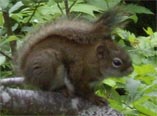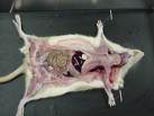 |
BIOLOGY Pre-AP Syllabus |
 |
GOALS:
The goals of the Academy first year biology course are…
- to provide students with a background in biology that will facilitate an understanding in biology and success in other related science classes.
- to develop skills in laboratory procedure and safety.
- to develop skills in critical thinking.
TEXTBOOK:
Biology. Kenneth Miller and Joseph Levine. Prentice Hall Publ. 2004
COURSE DESCRIPTION:
This course serves as an introduction to the fundemental concepts of biology and prepares the student for additional life science courses such as Advanced Placement Environmental Science and Advanced Placement Biology. Content can be expected to be fairly rigorous, with high expectations of mastery of the key concepts by all students. Topics will include animal behavior, ecology, cell biology, genetics and evolutionary theory, human biology and a survey of the diversity of life. Laboratory activities will provide students with the opportunity for further investigations into the areas described above. The course outline can be found in the later part of this syllabus.
CLASS ROUTINES:
- You are expected to be seated and ready to work when the bell rings.
- You are expected to remain on task until the bell rings and you are dismissed.
- You will turn in all assignments to your period folder in the filing cabinet at the beginning of the period.
- If you have been absent, you will be expected to have an admit to class.
- You are responsible for making up any work missed due to excused absences. Check your unit schedule to see what you have missed. If you know you will be absent on the day an assignment is due, you should turn your work in early.
- You will make an orderly transition between various types of activities.
CLASS MATERIALS:
Bring to class every day:
- Your biology book
- A loose leaf notebook with an ample supply of paper
- A pen and a pencil.
- A felt-tip pen with permanent black or blue ink (e.g. Sharpie).
- A lab notebook
- A calculator
TARDIES, ABSENTEES, AND DRESSCODE:
Attendance is extremely important to success in a Pre-Advanced Placement course. Students should plan on attending all classes. When an absence occurs, the student is responsible for obtaining any class notes from a fellow classmate. The absent student should also check with the instructor to determine if any activities were missed and rescedule these activities for a make up session. Make up labs will be arranged after school by the instructor and the student has the responsibility to attend these sessions. College Park has established tardy and dress code policies that will be enforced in this course. Any student not familiar with these policies should consult their student handbook.
GRADING:
70% Lecture & Lab Examinations – approximately every two weeks
15% Laboratory Activities & Reports
15% Daily Grades & Quizzes
Approximately 6 labs and 8 daily grades, which includes homework and quizzes, per nine weeks
BIOLOGY CLASS NOTES:
Each student will be required to keep a notebook that contains notes taken in class. As your first Academy science course, you will be encouraged to develop the techniques used in taking and maintaining effective class notes. These notes can be kept in a spiral notebook, composition book, or ringed binder. During each grading period, the instructor will do periodic checks of these notes during class. Notes are to be taken by each student and photocopied notes will not be allowed.
HOMEWORK:
- Students will receive an assignment sheet at the start of each nine weeks. Assignments for the grading period will vary. They may include readings from the text, written homework assignments, preparation for upcoming labs, lab reports and preparing for examinations. Written homework assignments and lab reports will be due on specific dates.
- Turn assignments into your class period folder in the filing cabinet at the beginning of class on the due date.
- Late work penalized 10% for each day late and will not be accepted after three days.
- Copying of homework will result in a zero for all involved.
JOURNAL (ARTICLE) REVIEWS:
This assignment allows students the opportunity to seek out articles that pertain to topics that are being discussed during a particular nine week grading period. Each student is required to find and read two articles that are from a reputable science journal that addresses the topics to be discussed during a quarter. Students may check the schedule to see what topics are available for each nine weeks. The instructor has several different types of journals in class that students can utilize. The article reviews should follow this format:
Documentation: This section should include the name o the article, title of the journal and date of publication and page number. A copy of the article is not needed.
Summary: This section should be approximately two paragraphs long and should summarize the topic of the article. This should touch on the main concepts.
Response: This section should include one or two paragraphs that discuss your personal feelings about the article. How did you feel about the topic and how does this current research change any pre-existing feelings that you had on this topic?
The entire report should be about one page typed. These two reports can be turned in at any time of the nine weeks, provided they are turned in before the end of the grading period. Each report must have the signature of a parent or guardian on the bottom. Reports lacking this verification will lose 10% from the grade. I would encourage students not to procrastinate on this assignment!
EXAMS:
-
Absence only on a review day does not exempt a student from that test.
-
If the instructor observes any violation of test taking procedures, he will take the papers and give zeros to all students involved. Parents and the Headmaster will be notified!
-
Students will have the opportunity to retake one test each nine weeks. The score on the second test replaces the first. A student who is absent on retake day loses the opportunity to retake that exam. A student who is absent on test day will also take the retake exam but that will not count as their one retake for that nine-week period.
-
Repeated absences on test days may lead to the loss of retake privileges.
COURSE TIMELINE:
Topic Outline |
Percentage of the Course |
|
| I. | Molecules and Cells | 25% |
| A. Chemistry of Life | 7% | |
B. Cells |
10% | |
| C. Cellular Energetics | 8% | |
| II. | Heredity and Evolution | 25% |
| A. Heredity | 8% | |
| B. Molecular Genetics | 9% | |
| C. Evolutionary Biology | 8% | |
| III. | Organisms and Populations | 50% |
| A. Diversity of Organisms | 8% | |
| B. Structure and Function of Plants and Animals | 32% | |
| (Including Human Biology) | ||
| C. Ecology | 10% | |
CONTACT INFORMATION:
Teacher - Karen Shumway
Conference – 12:56pm-1:42pm
Telephone – 936-709-3250
e-mail – kshumway@conroeisd.net
Webpage – http://info.conroeisd.net/~kshumway